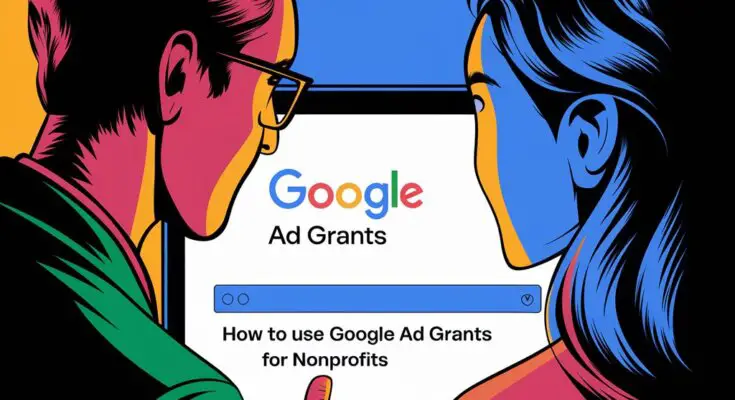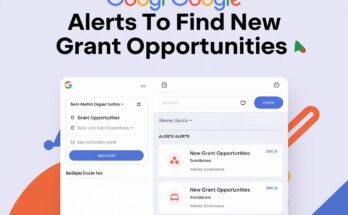In today’s digital landscape, having a strong online presence is essential for nonprofits looking to maximize their impact. One incredible resource that can help nonprofits achieve this is the Google Ad Grants for Nonprofits.
This program provides eligible nonprofits with $10,000 each month in in-kind advertising credits to promote their missions and initiatives.
In this blog post, we’ll explore how to use Google Ad Grants for nonprofits effectively, breaking down the process into simple, actionable steps.
By the end, you’ll understand how to leverage this powerful tool to expand your reach and connect with more supporters.
What is Google Ad Grants?
Before diving into the strategies, let’s clarify what Google Ad Grants is. This program allows eligible nonprofit organizations to run text-based ads on Google’s search results page.
Essentially, it enables nonprofits to promote their services, raise awareness, and drive traffic to their websites without incurring advertising costs.
However, to make the most of this opportunity, nonprofits must adhere to specific guidelines and best practices. That’s where our tips come in!
Getting Started with Google Ad Grants
- Check Your Eligibility: The first step in using Google Ad Grants is ensuring your organization qualifies. To be eligible, your nonprofit must be:
- A registered 501(c)(3) organization
- Not a government entity, hospital, or school
- In compliance with Google’s advertising policies
- Create a Google for Nonprofits Account: Once you confirm your eligibility, the next step is to create a Google for Nonprofits account. Here’s how to do it:
- Visit the Google for Nonprofits website.Click on the “Get Started” button.Fill out the required information, including your organization’s name, EIN (Employer Identification Number), and website.
Setting Up Your Google Ads Account
After creating your account, it’s time to set up your Google Ads account. Here’s a step-by-step guide:
- Sign in to Google Ads: Use the same Google account you used for your nonprofit registration.
- Create a New Campaign: Click on “New Campaign” and choose the “Search” campaign type, as it’s best suited for nonprofits.
- Choose Your Campaign Goals: Select your primary goal, such as increasing website traffic or raising awareness for a specific program.
- Set Your Budget: While you’ll receive $10,000 in monthly credits, you’ll need to set a daily budget. Google recommends starting with a budget of around $329 per day to maximize your ad spend.
- Define Your Target Audience: Choose your target audience based on location, language, and interests. This ensures your ads reach the right people.
Keyword Research: The Foundation of Your Campaign
Now that your campaign is set up, it’s crucial to conduct keyword research. Keywords are the terms or phrases people use when searching online. Selecting the right keywords can significantly enhance your ad’s visibility.
Here’s how to approach this:
- Use Google’s Keyword Planner: This free tool allows you to discover relevant keywords and see their search volume.
- Identify Relevant Keywords: Focus on keywords that align with your nonprofit’s mission. For example, if your nonprofit provides mental health resources, consider keywords like “mental health support” or “therapy resources.”
- Long-Tail Keywords: Don’t shy away from using long-tail keywords. These are longer phrases (typically three or more words) that are more specific and less competitive. For instance, instead of just using “mental health,” try “affordable mental health resources in [your city].”
Crafting Compelling Ads
With your keywords in place, it’s time to create compelling ads that attract clicks. Here are some tips for writing effective ad copy:
- Attention-Grabbing Headlines: Your ad’s headline is the first thing users see, so make it captivating. Use numbers, questions, or calls to action. For instance, “Get Help Today: Free Mental Health Resources!” can grab attention.
- Highlight Your Mission: Clearly state what your nonprofit does and how it benefits the community. For example, “Helping Families Access Food Resources” conveys your mission effectively.
- Include a Call to Action: Encourage users to take action by including a clear call to action. Phrases like “Learn More,” “Donate Now,” or “Sign Up for Our Newsletter” guide potential supporters on what to do next.
Monitoring and Optimizing Your Campaign
Once your ads are live, it’s essential to monitor and optimize your campaign regularly. Here’s how:
- Use Google Analytics: Set up Google Analytics to track website traffic from your ads. This will help you understand which keywords and ads are performing well.
- Monitor Click-Through Rates (CTR): The CTR measures how often people click on your ad after seeing it. A low CTR may indicate that your ad copy or targeting needs adjustment.
- A/B Testing: Experiment with different ad copies, headlines, and keywords to see which combinations yield the best results. This ongoing testing can improve your campaign’s effectiveness over time.
Practical Example: A Success Story
Let’s take a moment to illustrate how a nonprofit successfully leveraged Google Ad Grants.
Meet “Hope for Tomorrow,” a small nonprofit dedicated to providing educational resources for underserved youth. After receiving their Google Ad Grant, they set up a campaign targeting keywords related to free tutoring services and educational programs in their local area.
They crafted compelling ads highlighting their mission and the impact of their programs, such as:
- Headline: “Free Tutoring for Underserved Youth in [City Name]!”
- Description: “Join us in empowering the next generation. Sign up for free tutoring sessions today!”
Through consistent monitoring and optimization of their campaign, “Hope for Tomorrow” saw a 300% increase in website traffic and a 50% increase in volunteer sign-ups within just three months! This success not only boosted their visibility but also allowed them to serve more children in need.
Common Mistakes to Avoid
While using Google Ad Grants can be highly beneficial, some common mistakes can hinder your success. Here are a few to avoid:
- Neglecting Policy Compliance: Google has strict policies regarding ad content. Ensure your ads align with their guidelines to prevent suspension.
- Ignoring Negative Keywords: These are keywords for which you do not want your ad to appear. For example, if you’re offering free services, you might want to exclude terms like “paid” or “cost.”
- Failing to Track Results: Regularly analyze your ad performance. If certain keywords or ads aren’t performing well, adjust your strategy accordingly.
Tips for Maximizing Your Google Ad Grant
To further enhance your experience with Google Ad Grants, consider these additional tips:
- Utilize Ad Extensions: These provide extra information in your ads, such as phone numbers, additional links, or location information. Ad extensions can increase your ad’s visibility and improve your CTR.
- Create Multiple Campaigns: Segment your campaigns based on different services or target audiences. This allows for more tailored ads and better performance tracking.
- Leverage Remarketing: Use remarketing strategies to reach users who have previously visited your website. This can remind potential supporters of your mission and encourage them to return.
Unlock the Power of Google Ad Grants
Utilizing Google Ad Grants can significantly amplify your nonprofit’s reach and impact. By following these strategies—ensuring eligibility, setting up your account, conducting keyword research, crafting compelling ads, monitoring your campaigns, and avoiding common pitfalls—you can harness the full potential of this invaluable resource.
Now that you’re equipped with the knowledge to navigate Google Ad Grants, it’s time to take action! Start implementing these strategies today and watch as your nonprofit flourishes in the digital landscape.
For more expert tips and resources, along with access to job opportunities, grant opportunities, exclusive webinars, and events, be sure to subscribe to the Nonprofit Navigators Newsletter! Join our community and empower your organization to thrive!
Additional Resources:
- The Small Business’s Guide to Winning Grants
- Request for Proposal Success: How to Write Proposals That Win
- The Ultimate Guide to Federal Grant Applications: Techniques for Success
- Digital Marketing for Nonprofits: A Comprehensive Guide to Boosting Your Impact Online
- Mastering Online Fundraising: A Nonprofit’s Guide to Digital Success




